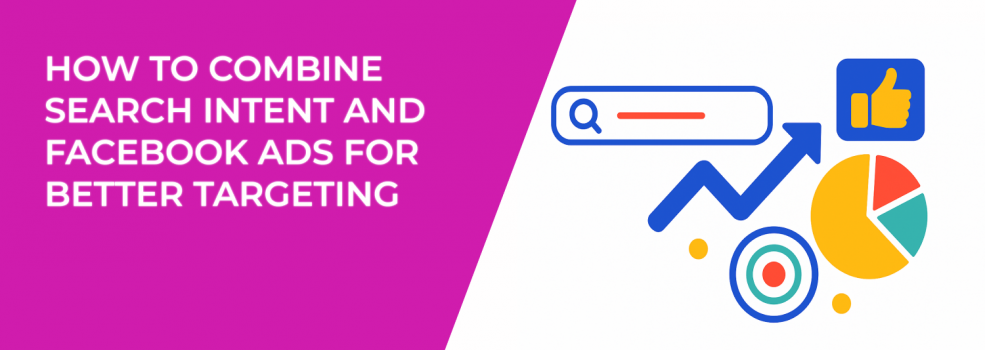Many advertisers run Facebook campaigns by guessing who might be interested in their products. They choose broad interests or generic lookalike audiences and hope for results. Sometimes it works, but often money gets wasted.
A smarter way is to match your ads with what people are already searching for. When you combine search intent with Facebook Ads, you can show the right message to the right people, at the right time. That’s what makes campaigns more effective and less expensive.
What Is Search Intent and Why Does It Matter?
Search intent simply means why someone is searching online. Every search has a goal behind it.
-
If someone types “how to start running,” they are just learning and not ready to buy yet.
-
If they search “best running shoes for flat feet,” they are already comparing options.
-
If they type “buy Nike running shoes near me,” they are ready to take action.
When you understand intent, you can match your ads to the stage people are in. This way, your ad feels relevant instead of random — and relevance is what makes people click. For a deeper dive into building the right audience foundation, see Facebook Ad Targeting 101: How to Reach the Right Audience.
Step 1: Find the Right Search Phrases
Start with keyword research. Tools like Google Keyword Planner, Ahrefs, or even the search data from your own website will help.
Look for:
-
Early-stage searches → words like “how,” “what,” or “why.”
-
Comparison searches → terms like “vs,” “best,” or “top.”
-
Buying searches → phrases with “buy,” “near me,” “discount,” or “price.”
Write down the ones that fit your product or service. These keywords will guide how you build your Facebook audiences and what kind of ads you create. You can also follow a structured process from How to Define a Target Audience for Marketing: a Step-by-Step Guide.
Step 2: Match Intent With the Right Facebook Audiences
Different search intent needs different targeting. Here’s how to connect the dots:
-
Informational searches (research stage): Create ads with helpful content — blog posts, guides, or videos. Use broad interest targeting to reach people who are just starting to explore.
-
Comparison searches (decision stage): Retarget people who visited your site after searching. Show them why your product is the better option.
-
Buying searches (ready-to-act stage): Target Custom Audiences made from people who visited your pricing or product pages. Push offers, discounts, or customer reviews.
This way, your ads follow the natural path of the customer’s journey instead of interrupting it. For advanced strategies on refining your targeting, check out Facebook Ads Targeting Updates: How To Adapt in 2025.
Step 3: Create Ads That Fit the Moment
Your ad creative should reflect what the person is thinking about.
-
For people just learning, share useful tips or ask thought-provoking questions.
-
For people comparing, show reviews, side-by-side benefits, or guarantees.
-
For ready buyers, highlight urgency — discounts, free shipping, or limited-time deals.
Think of it like a conversation. You wouldn’t pitch a price to someone who just asked what your product even does. Facebook ads work the same way.
Step 4: Use Retargeting to Stay Visible
Not everyone buys right away. Someone may click a blog post, browse your site, and then leave. That doesn’t mean they’re lost.
With retargeting, you can show ads to those same people when they’re back on Facebook. For example:
-
If they read an article on your site, retarget with a case study or explainer video.
-
If they looked at your pricing page, retarget with a special discount.
Retargeting keeps your brand fresh in their mind and reminds them to come back when they’re ready. If you’re new to setting this up, follow How to Set Up Facebook Retargeting.
Extra Tips for Smarter Targeting
-
Segment by device. Mobile searches are often casual, while desktop searches often mean someone is ready to make a decision.
-
Update ads often. People already know the context of their search. Don’t repeat the same ad over and over — keep it fresh.
-
Test different approaches. Sometimes a broader audience with intent-based ads works better than narrow targeting.
Always ask yourself: does this ad feel like a natural next step after the search someone made? If yes, you’re moving in the right direction.
Final Thoughts
Combining search intent with Facebook Ads helps you stop guessing and start connecting. By focusing on what people are searching for, you can create ads that meet them at the right stage of their journey.
Instead of wasting money on random clicks, you’ll be speaking directly to people who actually care about your product. That’s how you build campaigns that convert. And if your campaigns ever stall, don’t miss Facebook Ads Not Converting: How To Fix It.

